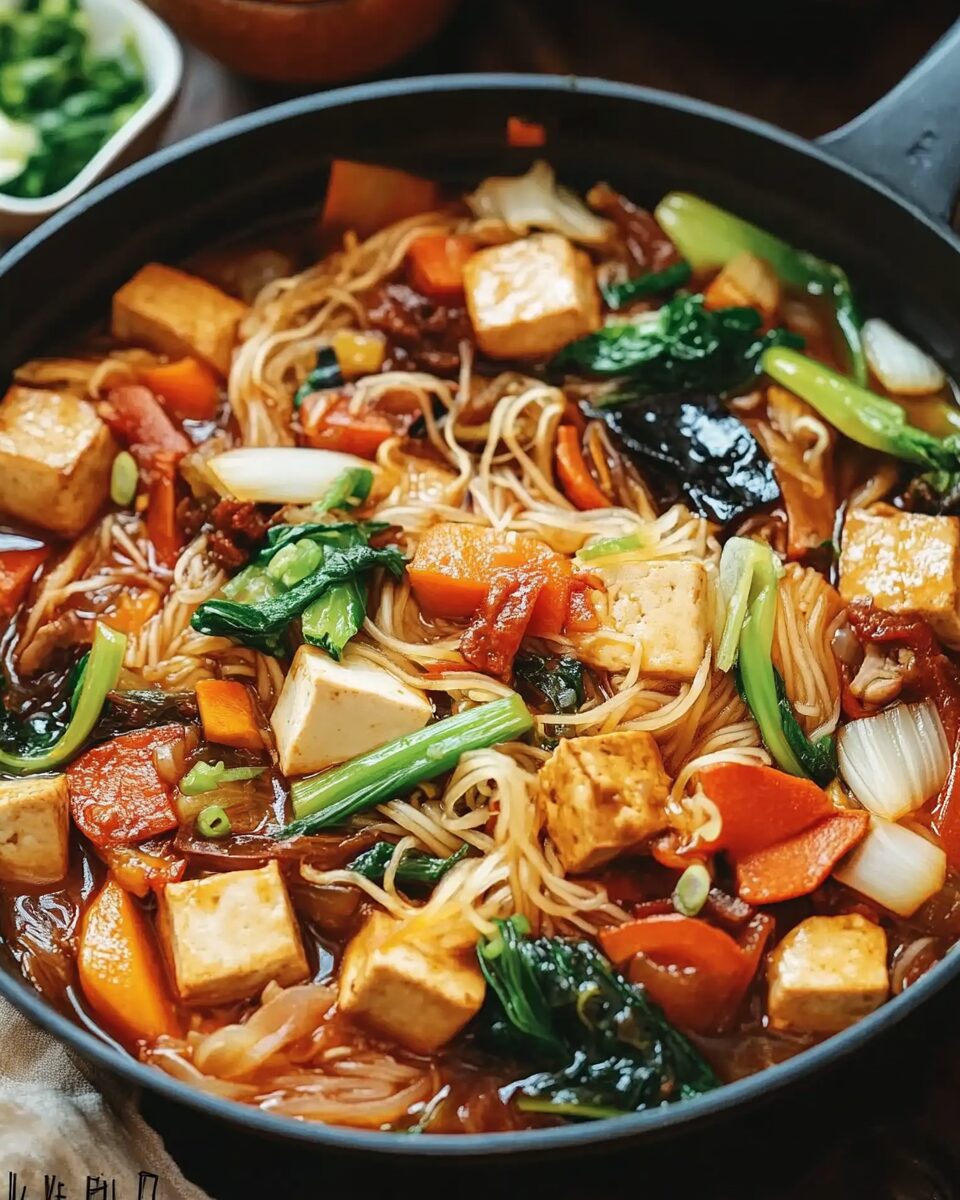A Historical Dish Rooted in Spiritual Simplicity
Buddha’s Delight has its origins in Chinese Buddhist temples, where monks observed strict vegetarian diets, avoiding not only meat but also pungent aromatics like garlic and onion. Over time, the dish evolved from a simple offering to the more elaborate and flavorful stew we enjoy today, reflecting regional variations and modern adaptations.
Traditionally, the dish is prepared using a medley of dried and fresh ingredients, which are rehydrated and simmered together in a soy-based sauce. While it was once considered a humble temple dish, today it’s become a favorite during the Lunar New Year, believed to bring balance, good karma, and harmony to those who partake in its nutrient-rich bounty.
Each ingredient used in Buddha’s Delight carries symbolic weight. For example, wood ear mushrooms symbolize longevity, bean thread noodles represent long life, and tofu stands for purity. The combination of these symbolic foods turns every bite into an intentional expression of health, peace, and prosperity.
A Symphony of Textures and Flavors
One of the most appealing aspects of Buddha’s Delight is the variety of textures it offers. From chewy vermicelli noodles to crunchy bamboo shoots, from silky napa cabbage to the spongy texture of tofu puffs, every mouthful delivers a unique experience. The dried mushrooms and lily flowers, once rehydrated, impart depth and a slightly earthy tone, while bok choy and carrots brighten the dish with freshness and color.
The base sauce, made from a trio of light and dark soy sauces and vegetarian oyster sauce, delivers the deep, savory umami flavor that anchors the entire dish. A touch of sugar and sesame oil adds balance and aromatic richness, while the cornstarch slurry thickens the sauce to a comforting, glossy glaze that clings to every vegetable and noodle.
Even with its minimal reliance on oil or added fats, Buddha’s Delight achieves remarkable depth of flavor thanks to careful layering and thoughtful cooking techniques. The brief steaming of vegetables after adding the sauce helps soften tougher components while keeping their integrity intact.
A Naturally Vegan and Gluten-Free Celebration Dish
While traditionally vegetarian, modern Buddha’s Delight is easily made vegan, especially when using plant-based oyster sauce alternatives. The dish also happens to be naturally gluten-free if gluten-free soy sauce (tamari) is used, making it an ideal offering for those with dietary restrictions or preferences.
With no dairy, no refined sugar, and packed full of fiber-rich vegetables, this recipe aligns with many healthy eating plans. Yet, it never feels like a “diet” meal—it’s hearty, filling, and deeply flavorful, a testament to how plant-based eating can be truly indulgent when done right.
Thanks to ingredients like tofu, vermicelli noodles, and mushrooms, each serving offers a balanced dose of protein, carbohydrates, and healthy fats. The inclusion of both fresh and dried vegetables enhances the nutrient density of the dish, providing calcium, iron, potassium, and antioxidants in every bowl.
Ideal for Meal Prep and Family-Style Dining
Another strength of Buddha’s Delight is its versatility as a meal-prep or family-style dish. It’s traditionally served as part of a multi-course banquet during New Year celebrations but also works beautifully as a standalone entree when served with steamed jasmine or brown rice.
The recipe scales easily and stores well, meaning it can be cooked in large batches and enjoyed throughout the week. The flavors continue to deepen as it sits, making leftovers even more satisfying. It reheats well on the stovetop or in the microwave, and because it’s a stew-style dish, it maintains its texture better than many other vegetable dishes.
Whether served for a quiet lunch or a celebratory dinner, it provides comfort and nourishment without the need for constant attention in the kitchen. The flexibility in ingredients also makes it a perfect candidate for using up produce odds and ends or adding seasonal vegetables.
Customizable with Local or Seasonal Ingredients
While the traditional version calls for dried lily flowers, shiitake mushrooms, wood ear mushrooms, and tofu puffs, the beauty of Buddha’s Delight is its adaptability. You can swap in or add ingredients like snow peas, baby corn, water chestnuts, or king oyster mushrooms to suit your taste or pantry availability.
In place of tofu puffs, baked or pan-fried tofu cubes can work equally well. If you’re looking for a grain-free option, skip the vermicelli and load up on extra greens or cabbage. For a richer variation, a splash of mushroom broth or fermented bean paste can add even more umami depth.
Each household or cook may put their own spin on Buddha’s Delight, just as each region of China has its own variation. That’s part of what makes the dish so enduring—it invites personalization while maintaining its core identity.
A Dish Full of Cultural Symbolism and Good Fortune
Food plays a central role in Chinese culture, especially during festivals, where dishes are chosen not only for their flavor but also for their symbolic meanings. In the case of Buddha’s Delight, the use of vegetarian ingredients during Lunar New Year is a gesture of purification—both spiritually and physically—as people enter a new year with positive intentions and renewed vitality.
Eating this dish as part of New Year celebrations is also believed to bring blessings and abundance, with each ingredient representing something desirable—be it long life, family unity, wealth, or peace. Sharing Buddha’s Delight with loved ones is a tradition that reinforces connection, gratitude, and mindfulness.
Even beyond cultural observance, preparing and enjoying a dish like this encourages a moment of reflection on the ingredients, the process, and the nourishment it brings—not just to the body, but to the spirit as well.
Conclusion
Buddha’s Delight is much more than a vegetarian stir-fry—it is a dish rich in tradition, flavor, and symbolic meaning. From its origins in Buddhist temple cuisine to its prominent place on the Lunar New Year table, it represents harmony, health, and compassion. With its medley of textures, umami-rich sauce, and vibrant colors, it’s as beautiful and satisfying as it is nourishing.
Whether you’re celebrating a holiday or simply seeking a wholesome and plant-based meal, Buddha’s Delight is a dish that delivers comfort and joy in equal measure. It’s a culinary reminder that food can be a celebration of both flavor and values, and that a thoughtfully prepared meal has the power to connect us to culture, community, and well-being—one delicious bite at a time.






